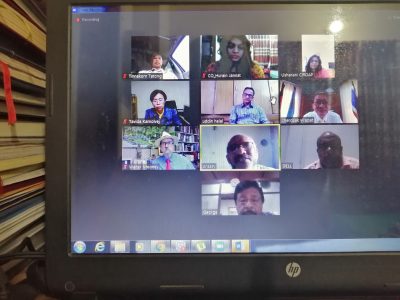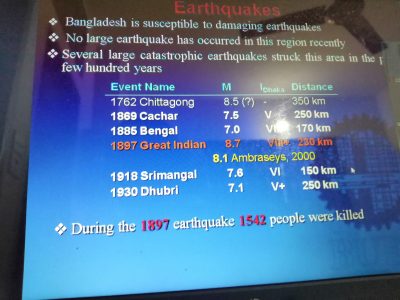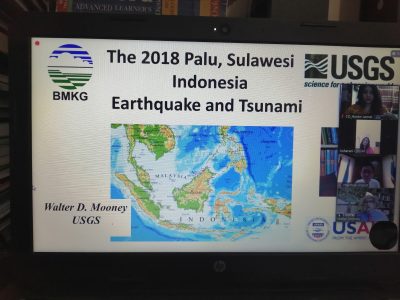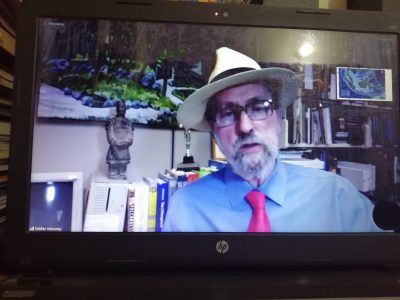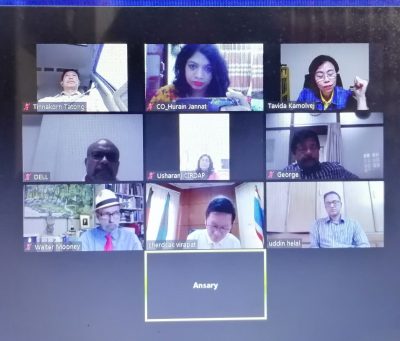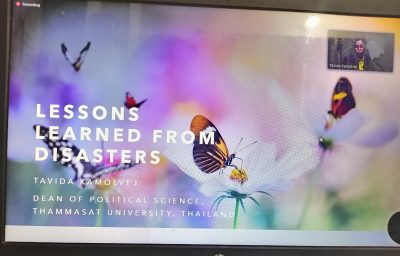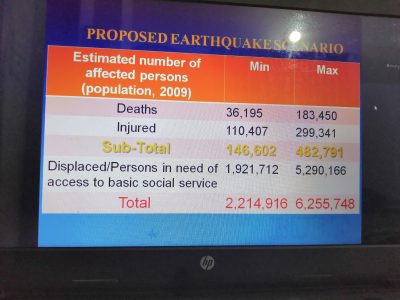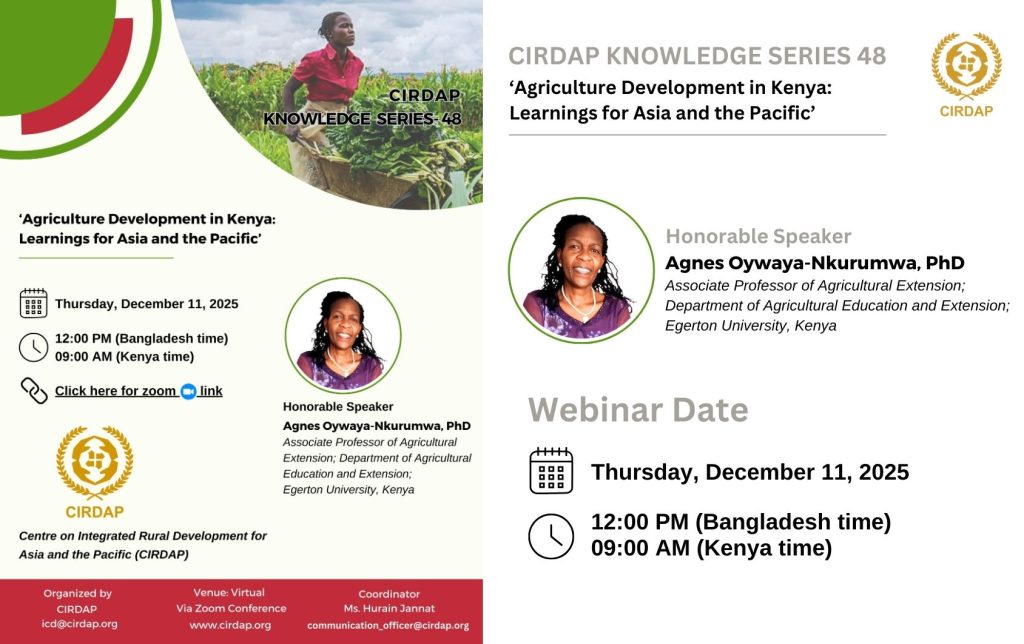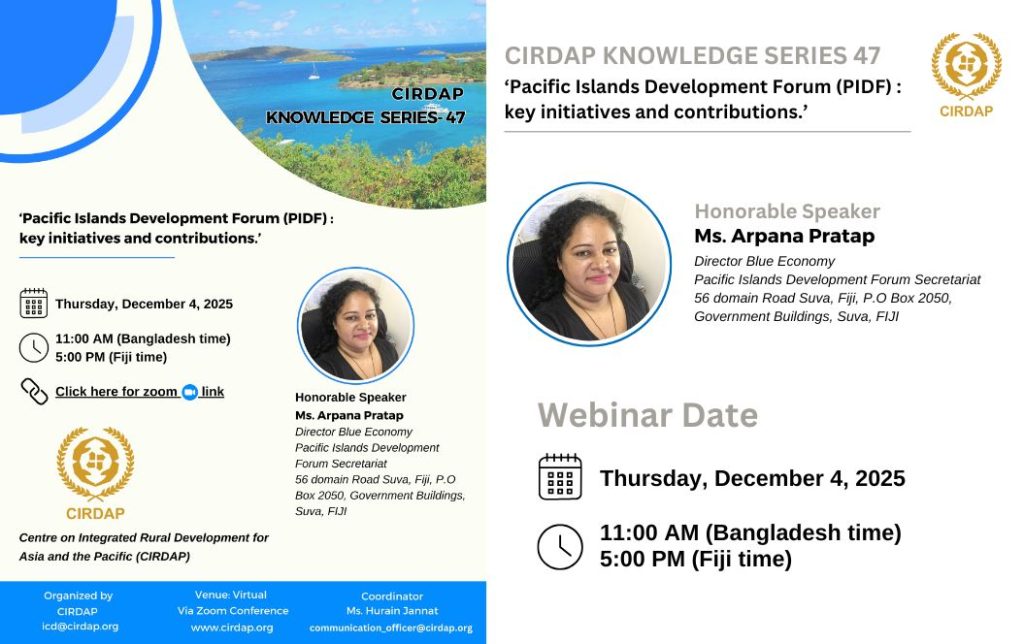
On the day of International Day for Disaster Risk Reduction, CIRDAP in collaboration with Bangladesh University of Engineering and Technology (BUET), organized the webinar on 13th October, 2020. The webinar is entitled “Expert Consultation on Building Earthquakes Resilient Communities and Societies for Bangladesh: Sharing Experiences and Lesson Learned from Earthquakes around the World”.
Director General (DG) CIRDAP, Dr. Cherdsak Virapat welcomed all participants. He informed that the date of 13 October is an important day for Thailand as the country commemorates the passing of the late King Bhumibol Adulyadej, the Father of the Nation in 2016. For honoring him, all the participants were requested to stand up for the Royal Anthem.
Dr. Virapat then proceeded by giving opening address of the webinar and provided his message for the International Day for Disaster Risk Reduction. He called for immediate global attention on disaster risk reduction by mean of hazard vulnerability assessment, disaster early warning, mitigation, preparedness and response. He expected that the meeting will identify strategic actions, measures and pilot implementation of end-to-end earthquake risk reduction systems for Bangladesh. Prof. Mehedi Ansary, BUET provided background and aims of the meeting.
Dr. Walter D. Mooney, USGS, U.S.A presented about Indonesian Palu and Sulawesi earthquakes which occurred on September 28, 2018. Dr. Mooney said, “Not only Tsunami but also this earthquake generated ground shaking, landside and liquefaction which was un-anticipated. Most of the emergency warning center destroyed due to this earthquake”. Due to the earthquake the death toll was high with the confirmed death of 3400 people. The key points of the Palu earthquake are that Tsunami waves was there for several minutes after the main shock and the maximum tsunami inundation was 469 m. He also said it will not matter how strong a building is built if the foundation is weak.
Prof. Tavida Kamolvej, Dean of the Faculty of Political Science, Thammasat University presented about the lesson learned from disasters. She emphasized more to lesson learned, awareness and education training about the earthquake than the technicality of it. She expressed that communication within the community helped a lot to make a risk reduction measures more than the national level measures. Participatory action research is required for this. Academics and local people – this combined team can be useful on the disaster risk reductions measures or post – disaster phases.
Prof. Helal Uddin, Director Research, CIRDAP addressed impacts of earthquake on Bangladesh’s economy. He expressed that since the capital stock of Bangladesh is more than a trillion dollar and Dhaka city contributes around 40% of our GDP which is a huge amount. So, Dhaka is being the most popular city and exposed to the earthquake, economic development and growth will be tremendously affected by indirect loss incurred by any earthquake.
Mr. Tinnakorn Tatong, Department of Mineral Resources, Ministry of Natural Resources and Environment, Thailand said, “Earthquake cannot be predicted but still the good data base is needed for kind of predicting about where it is going to happen. Which magnitude it is going to be? Then we can go and pursue the government”.
With the open discussions amongst the participants the webinar ended on 12 p.m. by the closing remarks of DG CIRDAP Dr. Virapat. On behalf of CIRDAP, he thanked all the experts and participants for sharing their views and suggestions on the issue of earthquake. CIRDAP and BUET will collaborate with all experts for further development to promote earthquake risk reduction for Bangladesh in the near future.
click here to download this report
